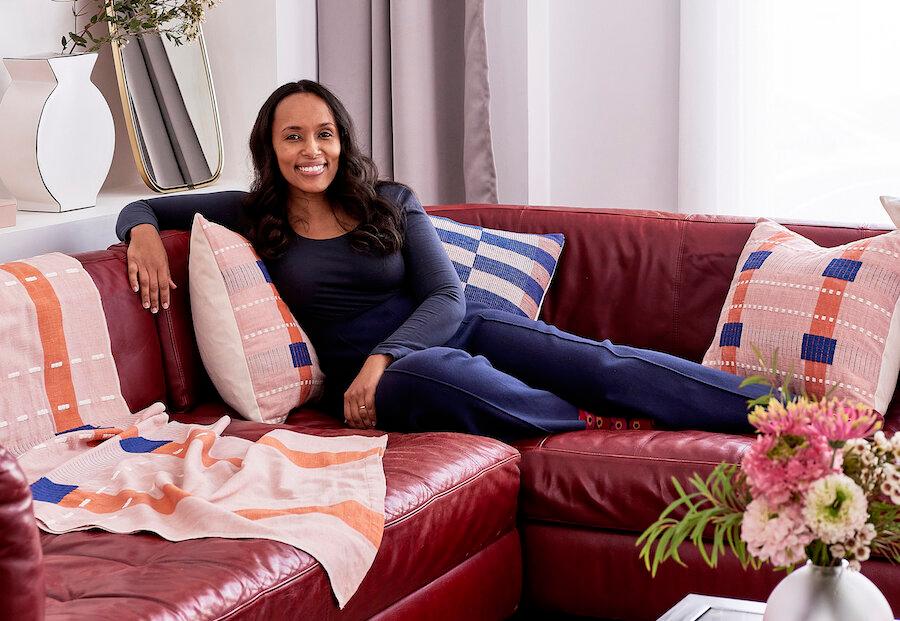Roads, whether straight or twisted, are metaphors for life; they can take you away from a place but they can also bring you back. Designer Hana Getachew knows this well. She deliberately named her business Bolé Road Textiles after the main artery in Addis Ababa, Ethiopia: the road that took her family out of Ethiopia when she was 3 years old—and the road that brought her back.
After an 11-year career as an architect in New York, Ms. Getachew created her business in 2015, collaborating with small Ethiopian artisan collectives and studios to produce hand-woven Ethiopian cotton textiles on traditional two-harness looms. Ms. Getachew designs her annual collections from her studio in New York and sends them to her partners in Ethiopia in a business model that is “not too complicated,” she said. “I just send designs by email and try to plan a visit right after, and manage production that way!” Her method allows for creative interpretation in the production process and for fair wages and a good lifestyle for the Ethiopian artisans.





